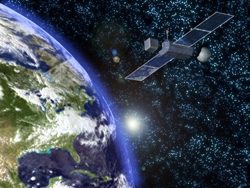HELIOSAT-3: shedding light on solar energy applications
The launch of Meteosat second generation (MSG) satellites into space heralded a new age in earth observation science. The HELIOSAT-3 project was established to develop new data products for solar energy applications with MSG data. The goal was to enable more efficient installations of photovoltaics and other solar energy technologies. The University of Oldenburg led a group comprising eight other research institutes during HELIOSAT-3. One of the major deliverables was the implementation of a solar energy operational processing chain in an effort to supply end users with a continuous flow of data products. Relevant hardware and software components were developed and installed at the University of Oldenburg to ensure a steady inflow of MSG data. System reliability was enhanced with back-up mechanisms established with other HELIOSAT-3 participants. The MSG data is subsequently fed to data processing software that incorporates the new HELIOSAT-3 algorithms. Efforts were also made to semi-automate data exchange. The result is that end users of the solar energy operational processing chain have access to a number of different types of solar data. Near real-time solar irradiance data is available for specific locations while historic data can be provided as a time series or plotted on a map.







